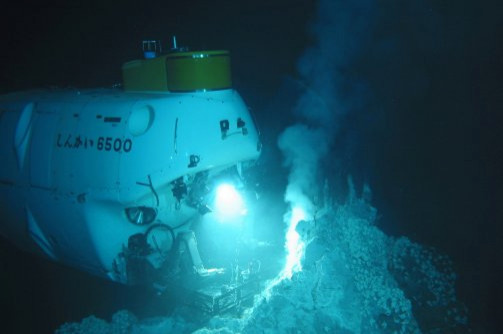The Week In Science: Brazilian 'Atlantis,' Quantum Computers, Mistaken Snail Identity

While the looming cicada breakout has been dominating our imaginations of late, there was still a lot of other hot news in science this week: an annular eclipse brought a “ring of fire” to Australia and islands in the Pacific Ocean; there was a coolant leak aboard the International Space Station; and a heroin vaccine produced promising results.
But there’s still a lot of science news that we didn’t get to. Here’s a roundup of what we missed:
Carbon-dioxide levels have crossed the symbolic threshold of 400 parts per million, according to new measurements by a U.S. government lab in Hawaii. The atmosphere hasn’t been this saturated with carbon dioxide since 3 million to 5 million years ago. [BBC News]
Speaking of millions of years ago, scientists have found evidence that back when the Arctic was significantly warmer than it is today, it was covered in a forest. Will there be pine trees among the polar bears in the future, thanks to our changing climate? [U.S. News & World Report]
A Houston gardener claimed to have found a giant African land snail in her garden this past week, sparking a health scare -- sometimes those snails carry parasites that can cause a type of meningitis in humans. But the U.S. Centers for Disease Control and Prevention noted that humans rarely contract the parasite, and usually only if they swallow uncooked snails or slugs. Plus, the snail turned out to be a relatively common rosy wolf snail, so it was a double false alarm. [Discovery News]
European history can be traced not only through artifacts and books, but also through DNA. A new comprehensive analysis looked at the genes of 2,257 people across the continent, and researchers were able to trace ancestry back through 100 generations. [Los Angeles Times]
A Brazilian Atlantis? Scientists have found granite boulders deep beneath the ocean off the South American coast that could be pieces of a long-lost continent that was swallowed by the waves 100 million years ago. [National Geographic]
Bet you never thought a bubble bath, a frothy beer and a complex math equation could ever be united. But mathematicians at the University of California at Berkeley have created equations to model the bursting of bubble clusters and “foam evolution.” [UC Berkeley]
The 17-year cicadas surfacing in coming weeks have missed a lot of news that’s happened aboveground since the Clinton administration. While they may be horrified to learn about 9/11, as the Onion speculated, they might be more interested in all the insect-related news they’ve missed, such as the decline of America’s bees and the discovery of the smallest fly in the world. [Smithsonian Magazine]
NASA researchers found a pair of dead stars 150 light-years from Earth that are likely surrounded by a ring of debris -- all that’s left of the planets that once orbited these objects. [National Geographic]
Quantum computers, which harness the abilities of subatomic particles, are the next great hope for complex computing. One model, made by D-Wave systems, has just aced its first test, performing a task 3,600 times faster than a conventional computer. [New York Times]
© Copyright IBTimes 2024. All rights reserved.





















